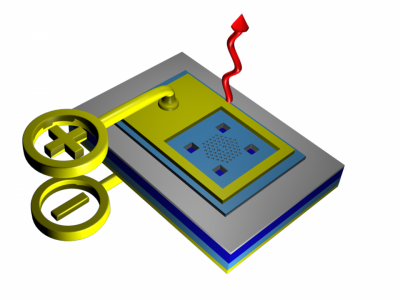WP-5
Solid state quantum technologies
The overall objective of WP5 is to develop quantum technology for investigating new physics, new qubits, and new quantum devices. In the short perspective, the SOLID application- and industry-oriented opportunities are primarily connected with the development of core-technologies needed for the success of SOLID: microwave engineering, photonics, and materials science, as well as control of the dynamics of small quantum systems for creating non-classical entangled states. This will provide opportunities for improving coherence, for very sensitive measurements, for cooling and lasing, quantum switching and distribution of quantum information, activation of in-situ local quantum stations with qubits in 2D cavity networks, quantum simulation of non-trivial spin models, interconversion of microwave/optical photonic states, and quantum communication between local and remote quantum stations via optical photons, and for reversible transfer of information and entanglement between matter and radiation.

Potential technological breakthroughs may happen if high-efficiency microwave photon detectors and photon counters are designed and fabricated. This will allow further studies of unexplored microwave regimes in Astrophysics and Cosmology, the advent of quantum information devices with microwave photons. Microwave photodetectors could be used for quantum computing with propagating photons. The avenue of quantum measurement of propagating (weak) quantum microwaves is waiting to be opened, and many technological applications may appear. An interesting research line is the design of metamaterials with superconducting nanocircuits inside coplanar waveguides, not optimized for behaving as qubit, but for having specific “optical” properties when interacting with quantum/classical microwaves.
Workpackage 5 is led by ilichev [at] ipht-jena [dot] de (subject: EMAIL%20VIA%20SOLID%20Website%3A%20RE%3AWP-5) (prof. Evgeni Ilichev) from das Institut für Photonische Technologien, Jena and progress is measured against the the following sixteen milestones:
- M5.1 Development of parametric readout for qubits.
- M5.2 Determination of the dephasing and relaxation rates for the solid-state quantum system with a meta-materials engineered dielectric environment.
- M5.3 Design of metamaterials, in the context of Circuit QED, for implementing realistic microwave
- photon detectors and photon counters with propagating quantum microwave fields acting on
- qubit/clusters inside waveguides.
- M5.4 Development of a theory for propagating quantum microwaves interacting with one qubit or more
- qubits inside waveguides in Circuit QED.
- M5.5 Development of an operational multipartite entanglement characterization and classification
- forCircuit QED.
- M5.6 Spin-photon inter-conversion using solid state nanocavities
- M5.7 Electrically tunable single dot nanocavities
- M5.8 Coherent preparation of hole spin state
- M5.9 Coupling of NV centers to solid-state photonic structures
- M5.10 Determination of the dephasing and relaxation rates for the solid-state quantum system with
- improved dielectric environment.
- M5.11 Experimental demonstration of lasing with a single flux qubit
- M5.12 Experimental demonstration of lasing with two qubits coupled to a cavity and/or two cavities
- coupled to qubit.
- M5.13 Design of protocols for generating and measuring multipartite entangled qubit states inside
- waveguides.
- M5.14 Design of protocols for generating and reconstructing the state or phase-space representation
- (e.g., Wigner function) of propagating quantum microwaves.
- M5.15 Design of protocols for the simulation of useful many-body Hamiltonians in circuit QED.
- M5.16 Design of protocols for the simulation of quantum relativistic dynamics in circuit QED.

